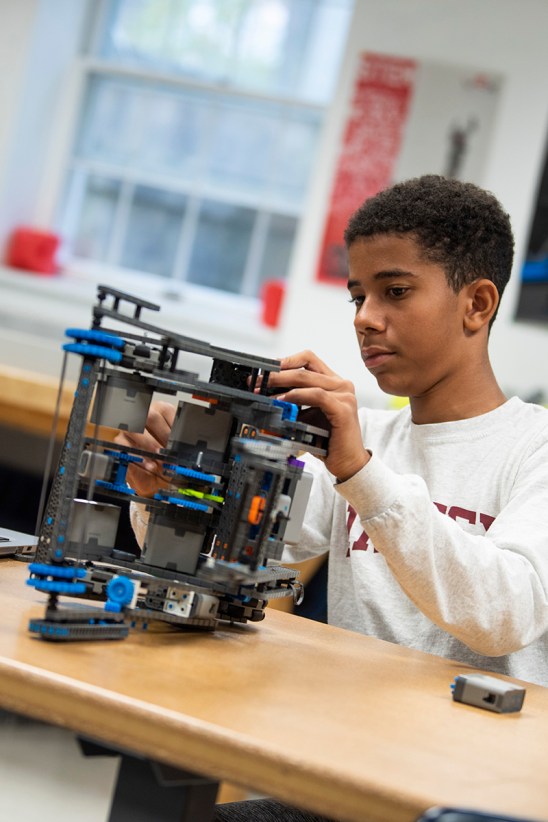First-time mom Andrée-Anne Martel learned about the difference that a doctor visit can make when her 7-month-old son developed a bad cough. “It was a cold, and it just kind of kept going,” she says. The baby had been sick for a month when she took him to her pediatrician.
After a brief exam, the doctor told Martel that her baby needed a nebulizer – a machine that medicates the lungs with a mist and is normally used to treat asthma. Two weeks of nebulizer treatments didn’t help the cough, and the baby developed an eye infection as well, so Martel’s husband and son returned to the pediatrician – again without success.
“The baby was coughing his lungs out the whole visit with the doctor, but he just gave him eye drops and let him go,” she says. “He was just doing the least possible.” The next day, convinced that the doctor was missing something, Martel took her son to an urgent care clinic where a doctor ordered a chest X-ray and diagnosed pneumonia. Shortly thereafter, she found a new pediatrician.
Martel’s experience didn’t involve the regular checkups that doctors call “well-child visits,” but it clearly illustrates what can go wrong when parents and pediatricians aren’t on the same page. And because there’s so much ground to cover when kids do come in for regular checkups, it’s even more important for moms, dads and doctors to work together to get them right.
What Happens at a Checkup
“There are a variety of things that we typically don’t address during illness visits that are important long-term,” says Carlos Lerner, M.D., a pediatrician at UCLA Children’s Health Center and professor of pediatrics at UCLA’s David Geffen School of Medicine. These include behavior and child development, safety, and discussion of upcoming health issues. During an illness visit, “we have a fixed length of time and we have an agenda,” Lerner explains. “During a well-child visit, there’s the time and the focus both.”
Some of the time is taken up by measuring – height, weight, blood pressure – and some by immunizations against a host of preventable diseases. You’ll be asked questions, or even to fill out a questionnaire, to help the doctor tell if your child is hitting developmental targets. But much of the visit should be devoted to discussion.
Joseph F. Hagan, M.D., FAAP, is co-editor of the Bright Futures Guidelines from the American Academy of Pediatrics (AAP). Now in their third edition, with a fourth in the works, the guidelines are the gold standard for what should happen at well-child visits. (You can read them online at www.BrightFutures.aap.org.) Hagan breaks the major tasks at these visits into four categories:
1. Disease detection – Spotting signs of illness;
2. Disease prevention – Keeping kids well;
3. Health promotion –Talking up the benefits of things like healthy eating and physical activity; and
4. Anticipatory guidance – Giving parents advice about health issues that, based on a child’s age or developmental level, the pediatrician knows are about to come up.
“At 2 months, we’ll talk about car seats. At 8 years, we’ll talk about booster seats,” Hagan says. And when he’s letting a mom know that her 1-year-old will soon want one or two meals a day instead of four, and that she shouldn’t push him to eat if he isn’t hungry, Hagan is covering several of these tasks at once – preventing obesity-related health problems, promoting healthy eating, and guiding a mom’s care of her child.
“It’s about having a conversation with the child and their parents about health,” says Hagan.
The Parents’ Agenda
How long these conversations last is a bone of contention with many parents. Pediatricians tend to think they spend more time than they actually do on well-child exams, Hagan says, while parents underestimate how long their child’s exam lasted. On average, visits are 30-60 minutes long, with some of that time spent in the waiting room and some with a nurse or other caregiver who measures weight, height, etc. Actual face-time with the doctor averages about 18 minutes, Hagan says.
“We always say that the first priority is to address the parents’ agenda,” he says. And parents have found some creative ways to make sure this happens.
“I email my pediatrician before the appointment so she knows the questions I have and she is ready to answer my questions and address the issues of concern,” says Andrea Goldberg Sieger, of Westchester. “And yes, she does.”
Lauren Rodriguez Webber says her pediatrician begins and ends each appointment by asking if she has questions or concerns. “And no matter how long or short the question list is, he takes the time to carefully answer each and every one of them.”
Lerner advises writing out your questions and concerns and sharing them at the beginning, rather than the end, of the visit, “so we know how we’re going to use what we know is a fixed amount of time.”
But don’t just make a laundry list. Keep it reasonable. “If there are 12 issues that you want addressed, realize that they might all get short shrift,” says Lerner. Instead, prioritize and tackle the most important items first.
Other ways to maximize your 18 minutes:
Arrive early enough to fill out the pre-visit questionnaire, so the doctor begins the checkup with the needed information.
Consider leaving siblings at home. Hagan says he loves to see them, but they can interrupt your conversation with the doctor.
Silence your cell phone. “I don’t mind it ringing,” says Hagan. “But if you’re going to answer it – the clock’s ticking.”
If you’ve got something truly pressing to discuss, let the office know when you schedule the appointment. And consider scheduling a second appointment if you don’t get through everything during the first. Answering parents’ questions sometimes takes the place of items on the doctor’s list, but Hagan says those issues can be addressed later if the checkup is part of an ongoing relationship. Some items can be saved for next time.
Getting to Know You
Building a steady relationship with one pediatrician also means that the doctor can more easily track your child’s health over time, and is more likely to spot problems early. “It’s one of the most powerful ways to be effective at what we do,” says Lerner.
Most well-child visits are still done by pediatricians, but Lerner notes that nurse practitioners and physicians’ assistants (PAs) have been playing a larger role.
Katie Raymond Wensuc says she often requests the nurse practitioner because her regular pediatrician gets so busy. “She is fantastic. She takes the time to get to know my children and is very thorough,” Wensuc says. “I trust that she’ll refer us higher up when necessary, but for routine physicals and the occasional ear infection or slight fever, she’s the best.”
Beth Jones had a different experience. “We used to only get checkups with the PAs, and they were nice and all, but it wasn’t until we happened to have a checkup with the actual doctor that she started pointing out some things wrong that we didn’t know about,” Jones says. “So from now on, we only go to the doctor.”
The person bringing the child to the doctor also has an important role to play. If someone who doesn’t normally take care of the child is pitching in to help, they’ll need to do some homework. “Make sure they come prepared to address the things we’d like to know about the child,” advises Lerner. How are they eating, sleeping, peeing and pooping? Have they learned a new word or a new motor skill? Are there any concerns at daycare, preschool or school? If the child’s teacher has given you any sort of written evaluation, bring that along to the visit.
Fitting It All In
As well-child visits have changed over the years, there is more and more for doctors to address – from asking about the presence of firearms in the home, to looking for signs of domestic violence, to urging bicycle helmet use.
Checkups now include screening for autism and other developmental problems, and a “greater understanding of and a greater emphasis on mental health,” says Hagan. Doctors also have to keep on top of the latest recommendations for physical screening, like the recommendation released last November that all kids ages 9 to 11 have their cholesterol (lipids) checked.
That recommendation, endorsed by the AAP, generated some controversy, because it was based on expert opinion rather than clinical studies. But Hagan believes the screenings should be done.
“Nobody knows whether we’re vastly going to improve the health of the population by screening for lipids at age 10,” he says, and the proof won’t come until decades from now when children being screened now reach middle age, and their heart health can be measured. “I’m not going to wait around for the results of that study,” says Hagan.
With so much to do, maybe the ideal well-child visit isn’t even possible. “The list is so long that it would be literally impossible to complete at every checkup,” says Lerner.
So doctors try to tailor the visit based on what they already know about the family, and on concerns brought up by parents. “We depend on families to do their share,” he says.
And that includes speaking up when something doesn’t seem right. Hagan wants parents to let their pediatricians know if they don’t understand something, don’t feel comfortable with something, feel rushed or haven’t had their questions answered. “If you’re not satisfied,” he says, “you should say so.” n
Christina Elston is a senior editor and health writer for Dominion Parenting Media. Read her family health blog, Healthe, at www.parenthood.com/healthe.php.
Resources
American Academy of Pediatrics (AAP) – www.aap.org – The academy’s website offers a wealth of child health and development information. Type “well child visits” into the search field for a great piece on checkups. Order books on a variety of child health topics from the Parent Resources store http://www.aap.org/en-us/aap-store/parent-resources/Pages/parent-resources.aspx
Bright Futures™ – www.brightfutures.aap.org – This national initiative, launched by the American Academy of Pediatrics, to promote children’s health and disease prevention, offers resources, including Bright Futures Guidelines, a manual on what should be done during regular checkups.

















